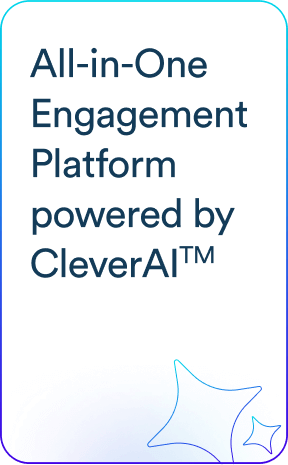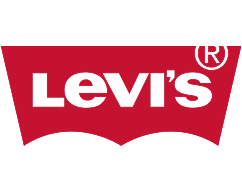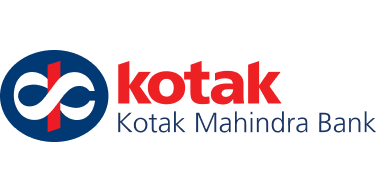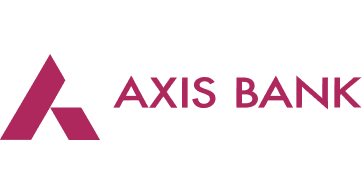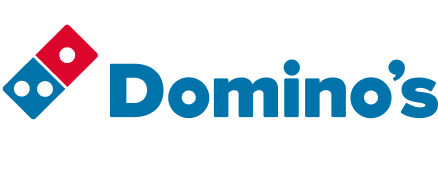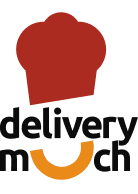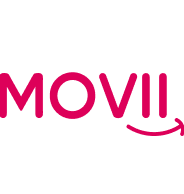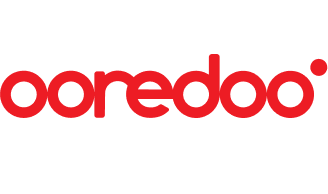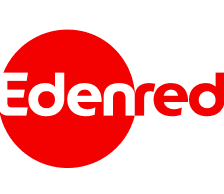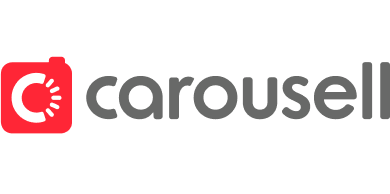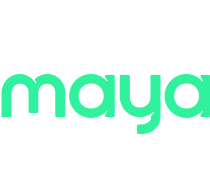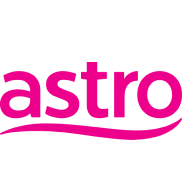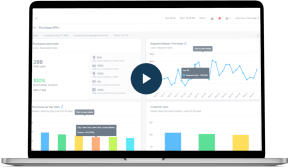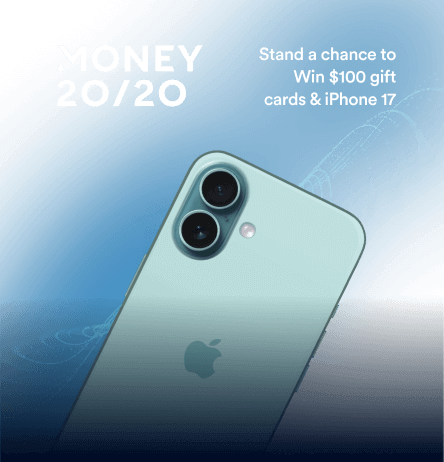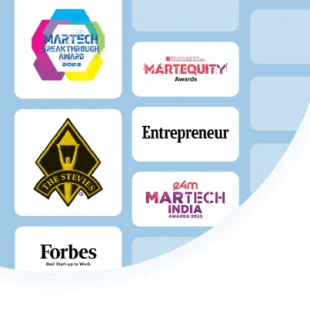Measuring the success of a mobile application goes far beyond just download counts. To understand if your mobile app marketing campaigns are truly effective and how user behavior translates into long-term value, larger mobile app metrics come into play.
In this comprehensive guide, we’ll define the mobile app metrics that matter, explain how to use them, and provide formulas where applicable. Not every metric will apply to every app, so we’ll also discuss how to choose the right KPIs for your application.
What Are Mobile App Metrics (and Why Do They Matter)?
Mobile app metrics are quantifiable measures that indicate how well your app is performing across different aspects of the user journey. They keep you informed about user acquisition, engagement, retention, and the revenue-generating potential of your user base.
Tracking these mobile app metrics matters because it provides actionable insights. If a certain campaign drives downloads but your retention rate is low, you know there’s an issue with user experience or value delivery. If users spend a significant amount of time in the app but revenue is low, you may need to refine your monetization strategies. Mobile app metrics let you define what “success” means for your mobile app and measure progress toward it.
How to Choose the Right Mobile App Metrics
With dozens of potential mobile app metrics available, it’s crucial to focus on those that align with your business goals and app type.
- Define What “Success” Means For Your App: Is it high user retention? Frequent in-app purchases? Strong viral growth?
- Identify Your North Star Metric: It is the single KPI that best reflects your app’s core value. Choose supporting mobile app metrics that drive or impact the North Star metric.
- Establish Benchmarks or Expected Ranges for Each Metric: Understand what “good” looks like within your app category. Use industry research or historical data to set realistic targets.
- Prioritize Actionable Metrics: Avoid focusing on vanity metrics unless they lead to insights.
Below is an extensive list of 50+ mobile app metrics to track, allowing you to select the ones that best align with your specific app strategy.
User Acquisition & Activation Metrics
These mobile app metrics tell you how well you are attracting new users to your app and getting them to sign up or start using the app’s core features. They measure the top of your funnel: the results of your marketing campaigns and the effectiveness of your onboarding process.
1. App Downloads
The number of times your app is downloaded and installed by users. This is a basic measure of your app’s initial popularity and the reach of your marketing efforts.
Why it Matters: Downloads mark the first step in user acquisition. Spikes often indicate successful campaigns or feature releases, while stagnation may require improved marketing or app store optimization (ASO). But since many apps are opened just once, always track activation and retention alongside downloads.
Formula: Simply the count of installations, though you can break it down by source or campaign.
While downloads are just the start, CleverTap’s attribution analytics let you break them down by source, campaign, or geography—so you know which acquisition channels are most effective.
2. User Growth Rate
The rate at which your user base is growing over a given period. You can measure growth rate weekly or monthly to see how fast you are acquiring users.
Why it Matters: A healthy growth rate indicates successful user acquisition strategies and growing app popularity. It can highlight the impact of marketing campaigns, updates, or market trends on user adoption. If the growth rate is slowing, it may warn you that you need to invest more in acquisition or investigate barriers to adoption.
Formula: User Growth Rate = (Current period users – Previous period users) / Previous period users × 100%
3. Install Trend
The pattern of app installs over time, such as the trajectory of daily or weekly download counts. Instead of a cumulative total, this looks at the trendline.
Why it Matters: It provides context beyond the raw number of downloads. A rising trend indicates momentum and effective marketing, whereas a downward trend may signal saturating interest or increased competition.
4. Registrations (Sign-Ups)
The number of users who create an account within the app. The registration rate is the percentage of downloads that convert into registered users.
Why it Matters: This metric gauges the effectiveness of your onboarding process. A low conversion from install to sign-up could mean your sign-up process is too lengthy, requires too much information, or that users lose interest early. A high user drop-off before registration means wasted acquisition spend.
Formula: Registration Rate = (Number of registrations / Number of installs) × 100%
5. Activation Rate
The percentage of users who complete a key initial action that is defined as “activation” for your app. This could be completing a tutorial, making a first transaction, or simply launching the app for the second time.
Why it Matters: Activation is often correlated with higher user retention – if users find value early, they are more likely to stick around. A poor activation rate signals that users aren’t finding value quickly or are dropping off due to confusion or poor onboarding. By tracking this, you can experiment with onboarding flows or highlight app value sooner to improve the metric.
Formula: Activation Rate = (Number of new users who reach the activation event / Number of new users) × 100%
CleverTap tracks first-time user flows and lets you define custom activation events, making it easy to monitor and improve early user engagement.
Engagement Metrics
Customer engagement metrics show how actively and frequently users are interacting with your app.
6. Daily Active Users (DAU)
The number of unique users who open or interact with your app on a given day. “Active” can be defined as simply launching the app or a more specific action, but generally, DAU counts anyone who had at least one session in a 24-hour period.
Why it Matters: DAU is a fundamental app usage metric. It indicates the size of your highly engaged user base. A growing DAU suggests increasing daily utility or habit formation, whereas a shrinking DAU might indicate users losing interest or churn.
7. Monthly Active Users (MAU)
The number of unique users who engage with your app in a 30-day (monthly) period. This casts a wider net than DAU, capturing infrequent users as well. It’s useful for apps that may not be used daily by everyone (e.g., travel booking apps).
Why it Matters: MAU is a broad measure of engagement and growth. An increasing MAU indicates your app is attracting and retaining more users on a monthly basis. MAU is often used alongside DAU to calculate the stickiness of an app.
Read our detailed guide on DAU and MAU and understand what app stickiness means.
8. Stickiness Ratio
The ratio of DAU to MAU, expressed as a percentage. This tells you what fraction of your monthly users engage daily.
Why it Matters: Stickiness shows how often users return. A high ratio means daily use and lower churn; a low one suggests infrequent or forgotten use. Boost stickiness with daily value or reminders like push notifications.
Formula: Stickiness = (DAU / MAU) × 100%
CleverTap makes it easy to improve activation and engagement by sending contextual push notifications based on real-time user behavior.
9. Sessions
A session is one continuous use of the app by a user, from open to close. The number of sessions per user or across all users measures how often the app is being actively used..
Why it Matters: More sessions indicate frequent engagement – users are coming back repeatedly. Tracking sessions helps you understand usage patterns. If you run campaigns or release an update, a spike in sessions can show increased engagement. Also, sessions tie into ad revenue (more sessions can mean more ad impressions if ads are shown per session).
Formula: Average Sessions per User = Total sessions in period / Total active users in period
10. Session Length (Average Session Duration)
The average amount of time a user spends in the app per session. Some apps aim for longer sessions (e.g., video streaming), while for others, shorter sessions might indicate efficiency (e.g., a utility app).
Why it Matters: Generally, longer sessions can mean users are finding a lot of value or content to consume (which is positive), but it could also indicate difficulty (if they’re struggling to complete a task). It’s important to interpret this in context. Coupled with screens per session and conversion rates, session length can illuminate user behavior.
Formula: Average Session Length = Total duration of all sessions / Number of sessions (in a given period).
CleverTap automatically tracks session count, length, and frequency, giving you a full view of how often and how long users interact with your app.
11. Session Interval
The time between consecutive sessions for a user, often measured in hours or days. This metric shows how frequently users return.
Why it Matters: A shorter session interval is usually better for engagement. It indicates users habitually check the app often. For example, social media apps strive for very short intervals (people checking dozens of times a day), whereas an app like an airline booking might naturally have long intervals.
Formula: Average Session Interval = Total time between subsequent sessions for all users / number of intervals
You can use CleverTap’s customer segmentation tools to identify users with long session gaps and trigger personalized nudges to bring them back.
12. Session Depth (Interactions per Session)
How many interactions or screens a user goes through in a single session, or how “deep” they go into the app each time they use it. For example, in an e-commerce app, a deep session might include browsing, adding to cart, and viewing checkout (multiple screens), whereas a shallow session might be just opening and closing.
Why it Matters: Greater session depth can indicate higher engagement or successful user journeys in a session. If users consistently have shallow sessions, they might not be discovering content or features effectively. Tracking session depth helps identify if users are following the expected funnels.
Formula: Average Session Depth = Total number of screen views (or key interactions) / Total number of sessions
CleverTap’s event tracking and funnel analysis let you visualize session flows and understand how deeply users explore your app in each visit.
13. Social Shares
The number of times content from your app is shared on social media or via referrals by users. This could include using built-in “share” buttons to post on networks or copying referral links, etc.
Why it Matters: Social shares are a proxy for organic virality and user satisfaction that indicates engagement and value. A higher share count can lead to new user acquisition (each share is potential word-of-mouth marketing). Also, understanding what content users share helps you optimize for virality.
Formula: Share Rate = (number of shares / DAU) × 100%
14. Bounce Rate
The percentage of users who open the app and then leave after a very short interaction (often defined as viewing only one screen or not performing any meaningful action).
Why it Matters: A high bounce rate indicates that users are not finding what they expected or encountering a poor first impression (e.g., app crashes, required sign-up might turn them off, or misalignment with what was advertised). Reducing bounce rate is critical: if a large portion of users abandon the app after one screen, your acquisition efforts are being wasted at the doorstep.
Formula: Bounce Rate = (Number of single-page sessions / Total number of sessions) × 100%
Platforms like CleverTap provide built-in tracking for DAU, MAU, session data, and stickiness, so you can easily monitor engagement trends and optimize user journeys.
User Retention Metrics
Retention metrics help you understand how well you keep users coming back over time. These KPIs show loyalty and the long-term stickiness of your app.
15. Retention Rate
The percentage of users who return to the app in a given time frame, such as day 1, day 7, or day 30 after install.
Why it Matters: Retention rate is one of the key metrics for mobile apps because it reflects user satisfaction and app value. A high retention means users find your app useful or enjoyable enough to keep using over time. Low retention signals that users try the app and abandon it, indicating issues with user experience, lack of content, or mismatch of expectations.
Formula: Retention Rate = (Users active at time X who were also active at the start / Users active at start) × 100%
Get access to our easy-to-use retention rate calculator.
16. Churn Rate
The percentage of users who stop using the app within a given timeframe.
Why it Matters: Churn directly impacts growth. If your churn rate is higher than your acquisition rate, your user base will shrink. A high churn rate is a red flag that something is driving users away, whether it’s app quality problems, lack of ongoing value, or aggressive competition.
Formula: Churn Rate = (Number of users who left in period / Number of users at start of period) × 100%
17. Uninstall Rate
The percentage of users who uninstall the app from their device. This is a specific form of churn.
Why it Matters: While churn can include simply becoming inactive, an uninstall is a stronger signal that the user has decided they won’t return (at least not soon). High uninstall rates, especially soon after installation, indicate a poor initial experience or unmet expectations (perhaps the app was not what the user thought).
Formula: Uninstall Rate = (Number of uninstalls / Number of installs) × 100% over a period
Learn why app installs happen and how can you fix those issues.
CleverTap’s uninstall tracking detects drops by OS, app version, or campaign, helping you understand what’s causing users to uninstall.
Monetization & Revenue Metrics
These metrics focus on how your app generates revenue and the financial value of your users.
18. Average Revenue Per User (ARPU)
The average revenue generated per user over a given period. This typically includes all revenue streams (purchases, subscriptions, ad revenue) to see how much value each user brings on average. It’s often used to compare the monetization efficiency before and after changes (like introducing a new premium feature).
Why it Matters: ARPU gives a quick snapshot of revenue health. A rising ARPU means you’re monetizing better (either users are spending more or you have new revenue streams). It’s essential for projecting revenue based on user growth.
Formula: ARPU = Total Revenue in period / Total Users in period
19. Average Revenue Per Paying User (ARPPU)
The average revenue per user who has made a purchase (or is a paying subscriber), typically over a period. This excludes non-paying users and focuses only on those who generate revenue. ARPPU is useful in freemium models where usually only a subset of users pay. It tells you how much your paying customers spend on average.
Why it Matters: ARPPU can highlight monetization potential among the converted users. A small percentage of users might pay, but if ARPPU is high, those few are generating significant revenue.
Formula: ARPPU = Total Revenue from paying users / Number of paying users
20. Customer Lifetime Value (CLV)
CLV might be defined as the net profit attributed to a user over their lifetime. Companies use CLV to determine marketing spend limits and to prioritize customer support/resources towards higher-value users.
Why it Matters: A user pool with a high average CLV is extremely valuable to an app. Comparing CLV to CAC (customer acquisition cost) is key: if CLV >> CAC, you have a viable business model and can invest more in growth.
Formula: CLV = Average Purchase Value × Average Purchase Frequency × Average Customer Lifespan
Calculate your customer lifetime value in 30 seconds using our calculator.
21. Purchase Frequency
Purchase frequency measures how often a customer buys from your business during a set period.
Why it Matters:This metric reveals important patterns in your customers’ buying habits and shows how well you encourage repeat business.
Formula: Purchase Frequency = Total purchases / Number of buyers (in a period)
22. Conversion Rate
The percentage of users who complete a desired goal out of those who could. There can be many conversion rates in an app: install-to-signup conversion, trial-to-subscriber conversion, or add-to-cart to purchase conversion. Here we consider conversion rate generally as users moving from a free state to a paying state.
Why it Matters: This is a core mobile app success metric for revenue. Improving conversion often has a huge impact on revenue without needing more users. By analyzing where users drop off in the purchase funnel, you can optimize pricing, messaging, or user experience to increase this rate.
Formula: Conversion Rate = (Number of users who completed the goal / Number of users who started or were eligible for the process) × 100%
Here are 25 strategies to help you increase your app conversion rate.
Use CleverTap funnels to track drop-offs from product view to purchase, and optimize touchpoints to increase conversion frequency.
23. Upgrades
The count of users who upgrade from a basic/free tier to a premium/paid tier of the app. This is relevant for freemium apps or those with tiered subscriptions.
Why it Matters: Upgrades indicate that users see value worth paying for. A steady flow of upgrades is essential for revenue growth in a freemium model. Additionally, understanding upgrade triggers (e.g., hitting a usage limit or new feature releases) can help you optimize prompts for upselling.
Formula: Upgrade Rate = (Users who upgraded / Users eligible to upgrade) × 100%
24. Subscriptions
The number of active subscriptions in your app, or subscription-related metrics like new subscriptions, renewals, and cancellations. For apps with recurring revenue (monthly/annual subscriptions), this is a key metric.
Why it Matters: Monitoring the subscriber count and how it changes tells you about your steady revenue base. You should also pay attention to the subscription conversion rate (what percentage of free trial or freemium users convert to paid subs) and the renewal rate (what percentage of subscribers continue their subscription at renewal time).
Formula: Subscription Conversion Rate = (New subscribers / Number of users who were offered a subscription) × 100%
Renewal Rate = (Renewed subscriptions / Subscriptions up for renewal) × 100%
User Experience & Performance Metrics
A positive user experience (UX) is essential for retaining users and encouraging engagement.
25. Load Time
The time it takes for your app to become usable upon launch, or for a specific screen to load within the app.
Why it Matters: A long load time can lead to higher abandonment. It also sets the first impression; an app that loads quickly feels more polished and trustworthy. Additionally, load time can affect app store ratings, as users often mention performance in reviews.
26. Crash Rate
The frequency of app crashes, often measured as the number of crashes per session or per user. Monitor crash reports and calculate how common they are. You may track crashes per 1,000 sessions or simply count daily crashes and see what fraction of users experienced a crash.
Why it Matters: Crashes quickly drive users away and hurt retention, satisfaction, and app store ratings. Tracking crash rates helps prioritize fixes—especially for frequent issues. Top apps aim for crash rates under 1% to ensure a stable experience.
Formula: Crash Rate = (Number of crashes / Number of sessions) × 100% (or per user)
27. API Latency
The time it takes for your app to receive a response from your server or third-party APIs. Measure the average latency (in milliseconds) for API calls, especially those that affect user experience (like fetching feed data or submitting a form).
Why it Matters: High API latency can make your app feel slow, leading to user frustration or drop-off. For cloud-based apps, it affects load and interaction times. Monitoring latency helps spot server issues and improve performance, ensuring smoother, faster user experiences.
Formula: If you measure each API call’s round-trip time, you can report Average API latency = total time of all API responses / number of calls.
28. Permissions Granted
The proportion of users who grant specific permissions that your app requests (location, camera, notifications, etc.). For example, “notification opt-in rate” or “location permission acceptance rate.” Track for each permission how many users allow vs deny. For iOS, notification opt-in is crucial since users can decline; for Android, you see how many proceed when prompted.
Why it Matters: Permissions unlock key features, and low opt-in rates can limit functionality or engagement (e.g., location or push notifications). Monitoring opt-ins helps you refine when and how you ask, delaying prompts until users see value can boost acceptance, especially for critical permissions like camera access.
Formula: Permission Allow Rate = (Number who granted / Number who were asked) × 100%
CleverTap enables in-app prompts and A/B testing for permission requests (e.g., notifications or location), helping increase opt-in rates.
29. App Stability Rate
An overall measure of stability, often expressed as the percentage of sessions without crashes or errors. This can be used as a high-level KPI for technical quality.
Why it Matters: A high stability percentage (close to 100%) is what you aim for to ensure nearly all users have a smooth experience. If your stability rate drops (meaning more crashes or hangs), it’s an alarm to fix issues.
Formula: Crash-Free Sessions % = (Sessions without a crash / Total sessions) × 100%
Marketing & Acquisition Cost Metrics
These metrics focus on how effectively you are acquiring users and at what cost. They tie your marketing spend and virality into quantifiable results. For app marketers, these are critical to measure campaign ROI and optimize marketing channel mix.
30. Customer Acquisition Cost (CAC)
The average cost to acquire a user, calculated by dividing total marketing spend by the number of new users. You can track CAC overall or by channel, like Facebook Ads vs. Google Ads.
Why it Matters: CAC is key for budgeting and must stay below LTV to ensure profitability. Rising CAC may signal ad fatigue or poor targeting. Lowering it through better targeting or organic growth helps improve ROI and forecast spending.
Formula: CAC = Total marketing cost / Number of new users acquired
31. Cost Per Install (CPI)
CPI is the cost to acquire one app install through paid ads. Ad networks often charge per install, so tracking CPI by channel helps assess campaign efficiency.
Why it Matters: CPI is widely used in mobile marketing. A low CPI is good, but quality matters—cheap installs may not retain. Comparing CPI across channels helps allocate budget, and as long as CPI stays within target, scaling is easy.
Formula: CPI = Ad Spend / Number of installs from that ad campaign.
32. Cost Per Acquisition (CPA)
CPA is the cost per conversion (like sign-ups or purchases), not just installs. Define your target event and divide ad spend by the number of conversions to calculate it.
Why it Matters: CPA focuses on deeper funnel events and aligns better with business goals. High CPA can be fine if the value per conversion is high. To lower CPA, improve targeting or streamline the conversion journey.
Formula: CPA = Ad Spend / Number of conversions (of the defined event)
33. Paid Conversion Rate
The percentage of paid users who complete a key in-app action (like a purchase or subscription). Track it to compare paid campaign performance against organic users.
Why it Matters: If users from paid campaigns convert at a higher rate, that’s great – it means those campaigns are bringing qualified users. If they convert at a lower rate than organic users, you might be acquiring less interested users through those ads (possibly incentivized installs or mis-targeted ads). Knowing this helps in calculating the true ROI of ad spend.
Formula: Paid Conversion Rate = (Number of paid-acquired users who complete the goal / Total paid-acquired users) × 100%
34. Organic Conversion Rate
The percentage of users acquired organically (non-paid channels like organic search in app store, word of mouth, etc.) who convert to a key goal (such as making a purchase, registering, etc.).
Why it Matters: A strong organic conversion rate indicates that users who find your app naturally are a good fit and find value. This is often the case if your marketing accurately targets the right audience.
Formula: Organic Conversion Rate = (Organic users who complete goal / Total organic users) × 100%
35. Return on Investment (ROI)
ROI is net profit from a campaign divided by its cost. Use it to assess which channels are profitable. For example, spending $1,000 and earning $2,000 profit yields 100% ROI.
Why it Matters: ROI shows if campaigns are truly paying off. Even with low CPI, poor user value can hurt ROI. Marketers use it to justify spend and scale effective campaigns.
Formula: ROI = (Gain from Investment – Cost of Investment) / Cost of Investment × 100%
36. Effective Customer Acquisition Cost (eCAC)
An “effective” CAC that includes not just direct ad spend but also organic acquisitions that happened due to marketing efforts, giving a blended cost of acquisition. It factors in free installs and the overall spend, or captures the idea of actual cost, considering that some customers come at no direct cost.
Why it Matters: It gives a fuller picture of acquisition costs, capturing spillover effects from paid efforts. A lower eCAC means more efficient growth than paid CAC alone.
37. Effective CPM (eCPM)
eCPM is the revenue (or cost) per 1,000 ad impressions. Track it to measure ad monetization or marketing efficiency across channels.
Why it Matters: A higher eCPM means better ad earnings or cost-effectiveness. Use it to compare ad formats, optimize fill rates, or assess campaign value beyond installs.
Formula: eCPM = (Total cost or revenue / Total impressions) × 1000
38. Click-Through Rate (CTR)
In mobile app marketing, CTR often refers to the ratio of users who clicked on an ad (or marketing link) to the number of times that ad was shown.
Why it Matters: CTR shows how appealing your ad is. High CTR often means more installs, but low conversion may signal misleading ads. Balancing CTR with quality ensures better targeting, lowers CPC, and improves overall campaign performance.
Formula: CTR = (Number of clicks / Number of impressions) × 100%
39. Cost Per Click (CPC)
The amount you pay on average for each click in a pay-per-click advertising model. Many ad platforms charge per click, so this is the spend divided by clicks.
Why it Matters: CPC and conversion rate together determine acquisition cost. A high CPC is only worth it if conversion or CLV is strong. Otherwise, improve conversion or lower CPC with better targeting and ad relevance.
Formula: CPC = Total ad spend / Number of clicks
40. Virality (K-Factor)
K-Factor is a metric for viral growth, representing how many additional users one current user brings in. Virality can be measured by the viral coefficient or simply by tracking referrals per user.
Why it Matters: Virality drives low-cost growth by turning users into promoters. Even a K-factor below one boosts paid efforts. Improving it with referrals or social features accelerates and clarifies true word-of-mouth growth.
Formula: K = Average number of invitations sent by each user × Conversion rate of those invitations
41. Install Source (Attribution)
The channel or referral source through which a user discovered and installed the app (e.g., “Facebook Ad Campaign A”, “Organic search”, “Friend referral link”). Use attribution tools to tag each install with a source. Then analyze what proportion of installs come from each source.
Why it Matters: Knowing install sources reveals which channels drive quality users, guiding budget and strategy. It enables key metrics like CPI and LTV by channel and helps troubleshoot poor-performing sources. Without it, ROI analysis isn’t possible.
42. Channel Breakdown
Similar to install source, this mobile app metric analyzes performance by acquisition source, like organic, paid, social, or email. It helps you track users, conversions, and revenue by channel to see which ones drive the most value.
Why it Matters: Channel breakdown shows which sources drive user volume vs. revenue, helping you balance quality and cost. It also helps allocate budget effectively and communicate performance to stakeholders.
43. Geo Metrics
The breakdown of your users by geographic location: countries, regions, or cities. It may also include language preferences.
Why it Matters: User behavior and revenue vary by region. Knowing your top markets helps tailor content, pricing, and marketing spend. It also highlights growth opportunities and ensures your infrastructure supports key locations effectively.
Learn how location-based marketing works in our detailed guide.
44. Demographics
The profile of your users in terms of attributes like age, gender, etc. Observe what segments (e.g., 18-24 year olds vs 25-34, male vs. female) are most using your app.
Why it Matters: Demographic segmentation data help validate if you’re reaching the right audience. If your app targets teens but most users are 30+, you may need to adjust your marketing. This data also supports better targeting, personalization, and campaign optimization.
45. Cohort Analysis
Cohort analysis is an approach of grouping users by a common start period or characteristic (a “cohort”) and analyzing their behavior over time. Perform cohort analysis to see trends like retention by cohort or revenue per user by cohort. For instance, you might see that users acquired in January retained better than those acquired in March.
Why it Matters: Cohort analysis allows you to measure changes in user quality over time or across segments. It also helps identify if certain cohorts (maybe based on channel or geography) behave differently. Instead of looking at overall averages (which can mask differences), cohort analysis brings clarity to lifecycle behaviors.
Learn how to conduct cohort analysis to boost customer retention.
With Cohort Analysis in CleverTap, you can see how retention varies by acquisition source, campaign, or user behavior—and target interventions accordingly.
46. Behavioral Metrics (Custom Events)
These are app-specific actions that users take, which you track as events (for example, “completed level 5”, “created a playlist”, “used feature X”). Define the key actions in your app that lead to success and track how often users perform these behaviors and what proportion of users engage with certain features.
Why it Matters: Generic metrics like sessions and retention are crucial, but drilling into what users do in the app provides deeper insight. If you have a social app, you might measure how many friends added or messages sent per user. Those behaviors might correlate with retention. Behavioral segmentation metrics allow you to identify your power users and users who never perform some key action might be at risk of churn. By analyzing behavior, you can iterate on features.
CleverTap’s custom events and user profiles let you track any in-app behavior—like “played a video,” “added to cart,” or “shared content”—and analyze how these impact retention and monetization.
App Store Optimization (ASO) Metrics
ASO metrics relate to your app’s visibility and appeal in the app stores (Google Play and Apple App Store).
47. Keyword Rankings
This shows where your app appears in app store searches for specific terms. Track key branded and unbranded keywords over time, especially after ASO updates, to measure visibility and discoverability.
Why it Matters: Ranking high for popular keywords boosts organic installs, as most users discover apps through search. Tracking keyword rankings helps assess ASO efforts and adjust strategy, especially if competitors start outranking you or certain keywords drive more installs.
48. App Store Category Ranking
The ranking of your app within its category or overall in the app store. For example, being the #1 app in the “Health & Fitness” category, or #50 overall free apps on iOS. Category rank is usually determined by some mix of downloads, velocity, and engagement as per the store’s algorithm.
Why it Matters: Higher category rankings boost visibility, credibility, and organic installs. Breaking intothe top charts can create a growth loop. Tracking rank helps gauge success and spot competitor activity, like promotions.
49. Views to Installs (Conversion Rate on Store Listing)
The percentage of users who, after viewing your app store page (listing), actually tap “Install” and download the app.
Why it Matters: This measures how well your app store page converts views into installs. Low conversion suggests issues with visuals, copy, or reviews. Improving icons, screenshots, and descriptions boosts installs without extra traffic—especially important if you’re driving paid ads to the page.
Formula: Store Conversion Rate = (App installs / App store product page views) × 100%
50. App Reviews (Quantity and Content)
The feedback left by users on the app store, often measured by the number of reviews and the qualitative content of those reviews.
Why it Matters: Reviews offer social proof and influence downloads—positive ones build trust, while negative ones can hurt installs. They reveal user sentiment, highlight bugs or feature requests, and help prioritize fixes.
51. App Ratings (Average Rating)
The average star rating of your app (usually on a 1 to 5 scale) as shown in the app store, and possibly separate ratings on each store. Also, the number of ratings. Note how each app update’s rating is faring.
Why it Matters: Star ratings are one of the first things users notice. A high rating (4.5+) boosts downloads and signals quality, while low ratings can deter installs. Maintaining strong ratings requires good UX and support, and prompting happy users to rate helps keep them high.
Learn how to improve your app ratings to boost ASO.
User Satisfaction & Feedback Metrics
User satisfaction metrics gauge the sentiment of your users beyond what you see in usage numbers. They often come from surveys or feedback tools. Tracking these metrics helps you understand overall customer sentiment and loyalty.
52. Net Promoter Score (NPS)
Net promoter score is a popular measure of customer loyalty and satisfaction, obtained by asking users how likely they are to recommend your app to others on a scale (usually 0 to 10).
Why it Matters: NPS is a succinct indicator of overall satisfaction and loyalty. A high NPS means users love your app enough to promote it to others, which often correlates with organic growth and longevity. A low or negative NPS is a warning sign that users are unhappy, even if they are still using the app, they wouldn’t endorse it.
Formula: NPS = % Promoters – % Detractors
You can run in-app NPS surveys directly through CleverTap, and trigger them based on time, behavior, or user segment.
53. Customer Satisfaction Score (CSAT)
CSAT measures users’ satisfaction with your app, typically via a simple survey question like “How would you rate your overall satisfaction with the app?” on a scale (e.g., 1 to 5 stars, or 1-10). Collect CSAT via in-app prompts after key interactions or periodically, like after a support interaction or after a user has used the app for a while.
Why it Matters: CSAT provides a quick pulse on user happiness at specific moments. It’s actionable and easier to tie to specific features or changes. High CSAT means your app is meeting or exceeding user expectations. Low CSAT flags that users are displeased, allowing you to investigate issues.
CleverTap allows you to launch satisfaction surveys in-app and correlate responses with actual user behavior for more meaningful insights.
Turn Mobile App Metrics into Meaningful Data with CleverTap
Use CleverTap’s all-in-one customer data and analytics platform to automatically track over 100 pre-built mobile app metrics, segment users, and drive conversions with personalized campaigns—all without heavy dev work.
Ready to turn your metrics into actionable insights? CleverTap helps growth teams track, analyze, and optimize every stage of the mobile user journey—from install to loyalty.
Subharun Mukherjee 
Heads Cross-Functional Marketing.Expert in SaaS Product Marketing, CX & GTM strategies.
Free Customer Engagement Guides
Join our newsletter for actionable tips and proven strategies to grow your business and engage your customers.

